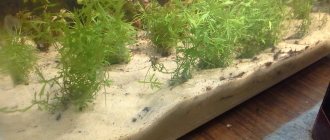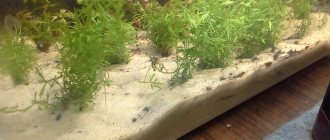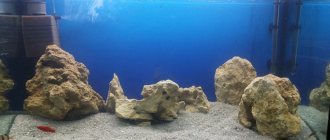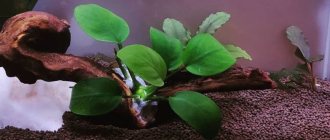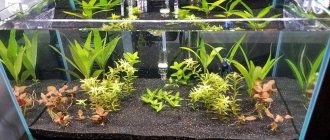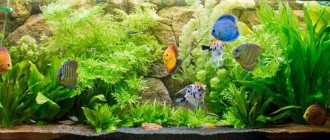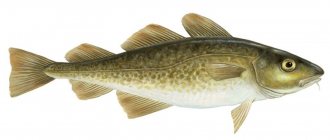Living sand is natural coral reef sand collected alive from the ocean, or non-living coral sand that is cultured to make it live.
What makes it alive are the microscopic biological bacteria that grow on it and the many tiny crustaceans and other micro and macro organisms that live in it.
Live sand can serve as the main base for biological filtration in a saltwater aquarium, while organisms help consume the organic matter in the sand bed.
Some organisms are also a natural food source for many aquarium inhabitants.
Pure live sand vs seeding
There are three main approaches to creating a live sand aquarium:
- Use 100% live sand, which can be very expensive.
- Use a 50/50 combination of live sand (new sand from the store or used sand from an existing aquarium) and non-living sand. By mixing them together (called seeding), you save money, and living sand turns the non-living part of the sand into living sand in a shorter period of time as biological bacteria and living organisms multiply and colonize the non-living ones. sand.
- Use only dead sand. Over time, all the sand becomes alive due to the nitrogen cycle. However, starting from scratch requires much more time to develop live sand.
If you have a new aquarium in the early stages of the nitrogen cycling process, or one that is still in the process of completing its cycle, you can use the seeding method to initiate or speed up this transition. For an aquarium that has been in use for some time, seeding can also improve the strength of the existing biological filter base.
Types of sand
Sandy soil is divided into several varieties, each of which is suitable for supporting certain phenotypes. Having chosen sandy soil as a filler for an aquarium, you should first decide on the type of substrate, and only then clean the sand.
Types of sand fillers:
- Marine or live - this type is suitable for reservoirs that imitate the depths of the sea. Living sand is a good source of nutrients, so plants actively grow and develop on it. However, when choosing a marine type, you must remember that you can only use manually prepared soil - for this you need to calcine the sand in the oven.
- River sand is the most popular and widespread type, which can be easily purchased in a store, or simply dug up in the nearest body of water. If you plan to use natural sandy soil, then before doing so you should find out how to wash the sand so that it does not harm the aquarium inhabitants.
- Quartz white sand is a beautiful and unusual option for exotic lovers, obtained from crushed quartz. The main advantage of quartz soil is its stability to the chemical composition of the liquid, and it also does not affect hardness. In addition, quartz sand for an aquarium neutralizes harmful elements present in the tank.
- Black quartz sand differs from white sand in that it contains particles of magnetite and ilmenite, which are safe for aquarium residents. Bright fish and green plants look very impressive and surprising on a dark substrate. Despite the richness of the tone, the black substrate does not color the water.
- Aragonite - consists of crushed corals. When using the aragonite type, it should be noted that coral soil increases the level of hardness in the water.
- Colored sand is created artificially and is ideal for creating a bright aquarium design. However, before using the colored variety, you should make sure that the soil is safe.
How much to use
If you are not going to use the filtration method, you should avoid using excessive amounts of live sand. The sand layer becomes too thick to trap unwanted dissolved organic compounds, promoting the growth of unwanted micro- and macroalgae.
As you can see, recommended amounts vary, and indeed different tanks will require different amounts. But the point is that a layer of 1.3 to 5 cm covering the bottom of the tank should be sufficient.
Soil for a marine aquarium, what types of soil are used
Unlike freshwater aquarium keeping, the choice of substrate as a ground. Not as extensive. By and large, there are two options: sand of several types and coral chips. The sand used in a marine aquarium has a very small fraction and is white. Sometimes sand with pink flecks is sold. There are two types of oolitic sand, for example: Carib Sea Ocean Direct Oolit with a fraction of 0.1-0.7 mm. and aragonite for example Carib Sea Bahamas 0.25-1 mm. Black sand for marine aquariums Carib Sea Havaiian Bleck 0.25-3.5 mm is sometimes found on sale.
Buying live sand
How can you be sure you are getting live sand or dead sand? That's a good question. With live rock you can see that it is alive, but not with live sand. The best way to ensure high quality live sand is to buy it from a reputable supplier who collects it directly from the ocean or specializes in cultured live sand and offers fast delivery; The shorter the delivery time, the better. You can also buy live sand from a reputable local fishmonger, but this can be expensive.
As with live rock, some dieback will occur during transport, and live sand will likely go through some kind of cycle. How many cycles are required depends on the viability of the live sand at the time it is shipped and how long it takes to die during transport.
How to prepare sand for an aquarium?
It is advisable not to trust advertising brochures and prepare the soil the day before pouring it into a container with fish. Coarse sand for an aquarium with a normal composition must be subjected to several basic operations that will make it safe for aquatic inhabitants. The process of preparing the substrate is simple and suitable for any beginner.
Stages of preparing sand for an aquarium:
- We wash with running water in a convenient container. Frequent work with sand in enamel basins or buckets leads to damage to the coating.
- For convenience, we divide the sand into portions of 3-4 kg.
- We rinse the soil until the flowing liquid becomes completely transparent.
- The remaining sand dust rises to the top and is removed.
- Disinfection is carried out by boiling for 15-20 minutes with constant stirring of the sand mixture.
- After boiling, the soil is washed again.
- Other methods of disinfection are calcination in ovens, treatment with a 10% chlorine solution.
- Soaking light sand in a strong manganese solution helps make light sand darker.
- Excess carbonates are removed from aquarium sand with a 30% citric acid solution. The treatment ends after the release of air bubbles into the water stops, then the soil is washed.
Adding live sand to the aquarium
If you are using live rock in your aquarium, it is best to lift the rocks from the bare bottom of the aquarium. Many sea animals bury themselves in the sand. In this case, any stones lying on the sand will slowly sink into the substrate as it moves. Placing sand "under" the rocks prevents them from sinking deeper into the sand, causing them to end up on the bare bottom of the tank. This also prevents rocks from shifting and prevents instability in stacked rock terrains.
Once you are done with your aquascaping and have raised the live rock or any other non-living corals or large sized rocks, it is time to add the substrate. Add live sand slowly to prevent the water from becoming cloudy. If you are using live rock in your aquarium, do not put sand on the rocks as this will suffocate the live rock and cause oxygen starvation.
Advantages and disadvantages of sand
Aquarium sand, like any soil in an aquarium, has advantages and disadvantages. The advantages of using a sandy substrate are as follows:
- Living vegetation in an artificial reservoir grows and develops better when planted in sand filler.
- Cleaning sandy soil is easier and more convenient, especially if a siphon is used for cleaning (we told you earlier how to make a siphon for an aquarium with your own hands).
- Sandy substrate does a better job of establishing the ecosystem in the tank.
- Fish that live in the bottom layers and like to dig in the ground prefer sand in the aquarium.
- This type of filler looks natural and natural.
Disadvantages of using this type of substrate:
- Before the soil can be used, the soil is washed and calcined, so it is important to know how to wash sand.
- This type of filler requires careful care and regular cleaning with a siphon, otherwise harmful bacteria will form in the tank.
- Some types of sand, such as coral sand, can change the composition of water.
- Pure sandy substrate contains a small amount of useful microelements needed by plants, so fertilizers and fertilizing are required.
Care of living sand substrate
The aquarium must have inhabitants who will stir or turn over the living sand. These animals are called sand agitators (or sifters) or janitors, keepers or aquarium/reef cleaners. Recommended types of detritivores include hermit crabs, shrimp, crabs, sea urchins, sea cucumbers, and starfish. For sand-sifting fish, try gobies, mandarins or jawfish.
Warning
Before adding any wipers, it is important to learn about them first. Research animal compatibility and dietary requirements (especially when it comes to named fish). Also make sure that the animals you choose are not toxic, like some cucumbers, or otherwise dangerous to other aquarium inhabitants.
With the right combination and the right number of reef wipers, deep siphon cleaning of the sandy bottom is not required. Of course, good maintenance is still important and you should pump out any uneaten food or excess debris from the "surface" of the sandy bottom and between rocks when necessary.
In general, working with live sand is similar to working with live stone. Check the water parameters to keep an eye on what is happening in the aquarium. Add new agents slowly (one or two at a time) and only when the reservoir has completely settled during the cycle or any recirculation that may occur after any type of new administration. Patience and time are key: take your time and let it grow.
We comply with the requirements
In order for the sandy soil in the aquarium to perform its functions with 100% efficiency, you need to remember several parameters.
- The grains of sand must be the same size. Otherwise, caking begins, and substances dangerous to fish - ammonia and hydrogen sulfide - are formed at the bottom.
- Choose a substrate with fractions of at least 1.5 millimeters in diameter. Smaller ones interfere with oxygen exchange. Because of this, waste and food particles are no longer processed, and the aquarium quickly becomes dirty and has to be cleaned more often.
- The sand in the aquarium should not affect the water. As mentioned above, white sand is not suitable for fish living in water with low hardness due to its calcareous composition.
- If you extract sand with your own hands, choose a clean body of water that does not contain toxic runoff and waste. River sand should not contain fragments or other debris. Self-extracted soil must be especially thoroughly cleaned and washed in order to prepare it for installation.
- Don't get carried away with colored sand. Undoubtedly, it looks very beautiful and impressive, and the dyes used are harmless. But some types, for example, red and yellow, contain iron oxide, which is harmful to fish. Gradually being washed out of the soil, the substance can cause the death of the inhabitants of the aquarium.
- Decorative point: it is believed that white sand makes the fish less bright.
Return to content
